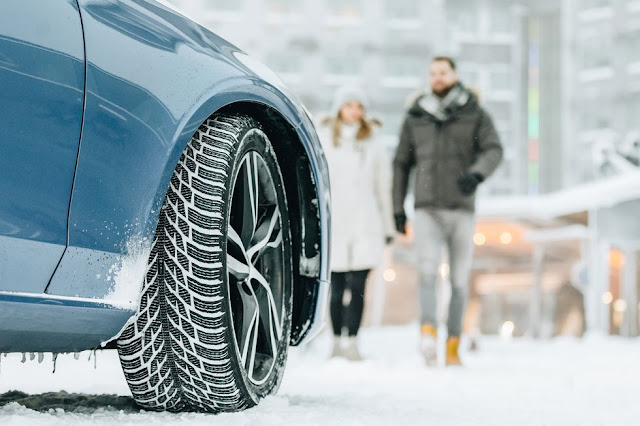What Can Off-Road Tyre Designs Do to Increase Traction, Durability, and Self-Cleaning?
Lug patterns in off-road and all-terrain tyre design Geometry is one of the most significant design features determining the ability of a tyre to grip differing surfaces and to eject mud and other debris from the lug. The pattern of studs, namely their size, shape, orientation, and spacing of individual stud blocks, directly governs the manner of finding traction via mechanical interlocking with the ground. Staggered or alternating shoulder lugs, aggressive, deep lugs bite into the loose, such as mud, gravel, and sand, to enhance their traction. The geometry is designed to create thrust by converting forces in a longitudinal direction and preventing lateral sliding. As an example, chevron patterns or zigzag patterns are good at generating lateral stability without impeding the motion of the tyre forward. The lug design also contributes to self-cleaning ability. Off-road tyres can be characterized by large gaps between lugs and tapered shoulders to provide a channel for centrifugal force to fling mud and stones out as the tyres turn. When mud or clay sticks between the lugs, the traction will be massively reduced, basically making the tread a slippery surface. Lug angles and ejector bars are finely tuned to hurl debris to the side as it rotates; that is why. Stepped or stone-ejection ridges between lugs are used by some manufacturers to guard against gravel entrapment. The constant interaction between the lug geometry and terrain contact points prevents off-road tyres becoming clogged when the sand is sticky. This characteristic is particularly valuable in multi-terrain tyres, which have to quickly adapt between soft and hard surfaces, such as moving between wet soil and rocky surfaces, without losing grip continuity.
Void Ratio and surface adaptability, as well as Grip
Another important parameter of off-road tyre performance is the void ratio, which is the ratio of the open space between the blocks of tread to the total area of tread. An increased void ratio creates additional volume with a greater volume of terrain in and out of the tread, which can help with self-cleaning and better traction on deformable surfaces such as sand, snow, or mud. This renders commonly used off-road-only tyres with high void ratios especially appropriate, as such Tyres Wolverhampton provide maximum flotation and ground contact. The trade-off, however, is decreased rubber contact with hard surfaces that would increase braking stability and generate higher road noise or tread wear under on-road conditions. All-terrain tyres offer a compromise in having moderate void ratios and offer acceptable amounts of voids to eject the dirt and offer decent traction yet have acceptable road characteristics. This would include a void ratio of approximately 2535 as compared to 4050 or superset in the extreme mud-terrain (MT) tyres. This relationship provides deformability to the tyre to wrap and hug rocks, tree roots, or irregular terrain, giving grip by deformation. Also manufacturers frequently differentiate void ratio across the tread face, self-cleaning deeper in the shoulders, with tight lugs at the center of the tread and contact with the road. This zonal change gives directional stability and flexibility in variable terrain types.
Load Handling and Puncture Protection Sidewall Reinforcement
The sidewall of an off-road tyre is not merely a structural threshold—it is a first line of defense against cuts, abrasion, and off-side lateral attacks by rocks, tree stumps, and sharp objects. Sidewall reinforcement is generally several layers of polyester, nylon, or Kevlar fabric plies encapsulated in rubber to enhance puncture, split, or bulge resistance. Such strengthening plies increase the structural integrity and provide controlled deflection to support terrain deformation to avoid tyre failure. If the terrain is rugged with continuous vertical load changes—say a vehicle drives over boulders or uneven rock beds—the sidewall needs to have constant movement so it holds in the ground without breaking the bead seal and tearing the rubber. To manage this kind of variable load, tyre manufacturers produce sidewalls featuring additional ply ratings (e.g., 3-ply vs. 2-ply), rugged rubber ridges, and serrated shoulder blocks that protrude into the sidewall region. These provide protection and additional traction areas where tyres are deflated partway to gain a greater footprint area, a frequent off-road tactic called airing down. There are also sidewall traction lugs that add lateral traction when pressure is low, like when driving up steep slopes or driving in deep ruts. Of particular importance in low air pressure operation is the reinforcement of the sidewalls, which have to withstand deformation yet be flexible enough not to be damaged by sharp impact.
Multi-Terrain Performance Integrated Design Consideration
Off-road tyres never work on separated design aspects, but, on the contrary, they work on a combination of lug volumes, void ratio, and sidewall structure to address challenges of mixed-terrain conditions. As an example, a tyre designed to handle gravel has to withstand wear and dislodge small rocks so as not to lose manners on the highway. Conversely, when optimizing mud and clay tyres, bite and ejection need to be maximized by having open lug spacing and steep shoulder blocks. The real engineering feat is to take all these performance characteristics and not to make an over trade-off on any of these disciplines. In consequence, manufacturers are employing the 3D computer-aided simulation to simulate tread deformation, mud flows, and contact patch evolutions in real-time conditions. Polymer compounds are highly reinforced with silica or carbon to provide both good cold flexibility in the tread and resistance to heat generation on rocks or hardpan. Off-road designs may employ interlocked center lugs to give stability at higher speeds on paved surfaces but allow off-road traction. Also, wear indicators and extra features in the self-sharpening tread design assist in edge efficiency throughout the lifetime of the tyre.




Comments
Post a Comment